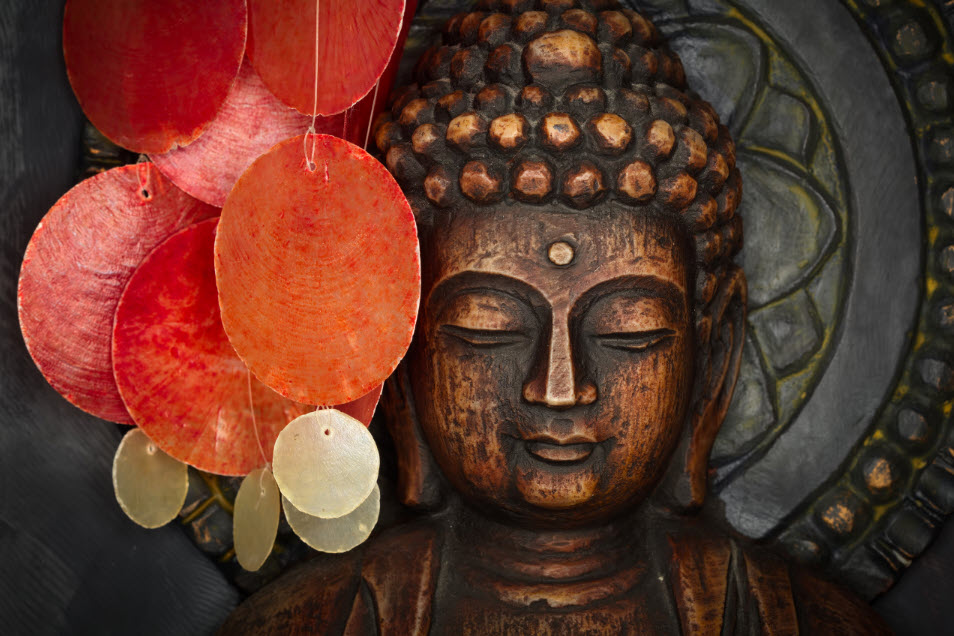
Bridging the Past with the Present
In today’s speed-fest world, it’s easy to feel overwhelmed.
The constant pull between work, family, and self-care can create an exhausting cycle of stress.
But what if the answers to finding balance have already been passed down for centuries?
Ancient wisdom, particularly from Buddhism, offers a timeless approach to navigating life’s challenges.
By tapping into these teachings, we can cultivate a life of balance, mindfulness, and compassion.
These are all key components of true work-life harmony.
Understanding the Nature of Suffering: A Path to Self-Awareness

The first step toward cultivating work-life harmony is understanding suffering.
In Buddhism, suffering is an inherent part of life. The Four Noble Truths present a framework for acknowledging that suffering exists.
Also, that it has a cause, and that it can be alleviated.
We don’t have to go through life unaware of this internal struggle.
Instead, we can train our minds to be present, to observe our struggles with compassion and wisdom.
I remember a time when I was drowning in deadlines, family obligations, and the constant pressure to do more.
I couldn’t see past the stress, and it felt like I was living to work, rather than working to live.
But when I took a step back, I realized that this suffering wasn’t something I had to accept.
I could choose to respond differently.
Through mindfulness and understanding the root causes of my stress, I began to carve out space for harmony in my life.
Compassion as a Practice: A Tool for Active Change

Compassion is more than just sympathy — it’s an active practice.
In Buddhism, compassion is not passive. It’s the intention to alleviate suffering and work toward a better future.
In our modern lives, this can mean offering compassion not just to others, but to ourselves.
Practicing self-compassion was a game-changer for me. As women, we often carry the weight of multiple roles.
We juggle work, caregiving, and personal aspirations, often without acknowledging how hard we are working.
When I began to show myself the same kindness I would extend to a close friend, the pressure began to lift.
I allowed myself to pause, breathe, and prioritize what truly mattered.
This shift in perspective changed the way I managed my time, my emotions, and ultimately, my life.
The Power of Mindfulness: Finding Peace in the Present

Mindfulness is another essential practice rooted in Buddhism, offering a way to center ourselves amid chaos.
By focusing on the present moment, we can detach from the overwhelming thoughts that contribute to burnout and anxiety.
I’ve found that even a few minutes of mindfulness during my day can reset my mind.
Whether it’s focusing on my breath, listening to calming music, or simply taking a walk in nature, these moments of presence allow me to ground myself.
When I return to my tasks, I enjoyed a clearer perspective.
This practice has become my anchor, helping me maintain a sense of peace even on the busiest days.

Bringing Mindfulness into Your Daily Routine

The beauty of mindfulness is that it doesn’t require drastic changes to your lifestyle.
It’s about infusing moments of awareness into your daily routine.
Here are a few simple ways to integrate mindfulness into your work-life balance:
- Start your day with intention: Before checking emails or jumping into tasks, take five minutes to breathe and set your intentions for the day.
- Take mindful breaks: Step away from your desk, stretch, or go outside. This simple act resets your body and mind.
- Practice gratitude: Each evening, reflect on three things you are grateful for. This shifts your focus away from stress and towards appreciation.
Compassion in Action: Balancing Your Responsibilities with Kindness

Bringing compassion into your life isn’t just about being kind to yourself.
It’s also about being kind to others — your colleagues, your family, and even strangers.
When we engage with others compassionately, we foster connection and understanding.
This creates a sense of support and community that helps alleviate the stresses we face in our modern lives.
As I began to practice compassion in my relationships, I noticed a shift.
My colleagues became more understanding, my family felt more supported, and I experienced less resentment and more cooperation.
Compassion created harmony not just within myself, but in my relationships.
Final Thought: Creating a Harmonious Life Through Ancient Wisdom

Tapping into ancient wisdom doesn’t mean living in the past.
It means using the tools passed down for generations to create a life of balance and purpose.
By practicing mindfulness, understanding suffering, and embracing compassion, we can navigate the complexities of modern life with ease.
Work-life harmony isn’t about perfection. It’s about being present, compassionate, and mindful in each moment.
Start small. Find your anchor. And embrace the wisdom that can guide you through the chaos.
References for Further Reading:
- “The Heart of the Buddha’s Teaching” by Thich Nhat Hanh
- “The Miracle of Mindfulness” by Thich Nhat Hanh
- “Radical Acceptance” by Tara Brach
